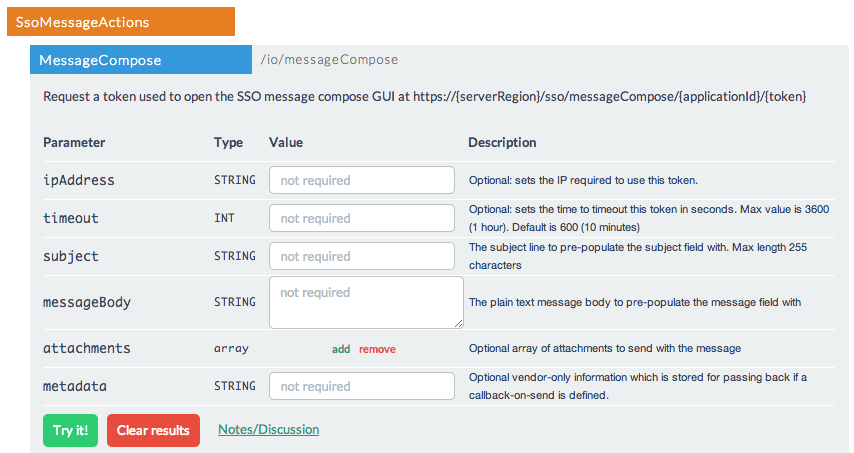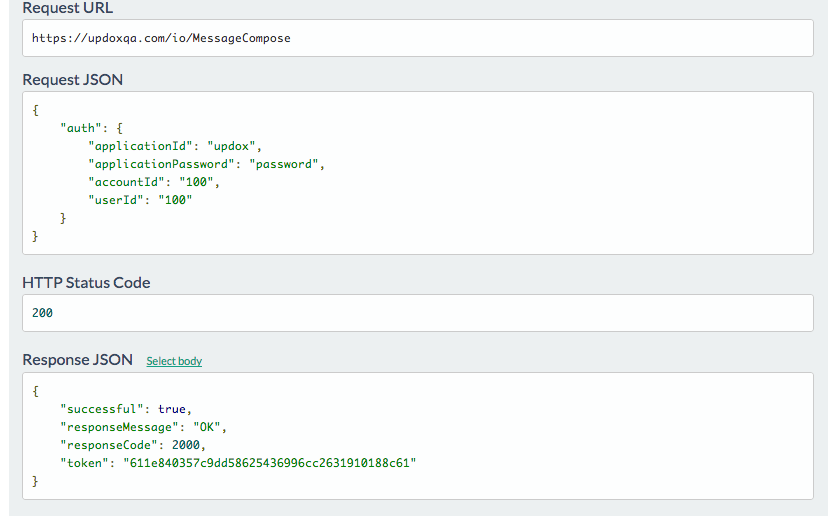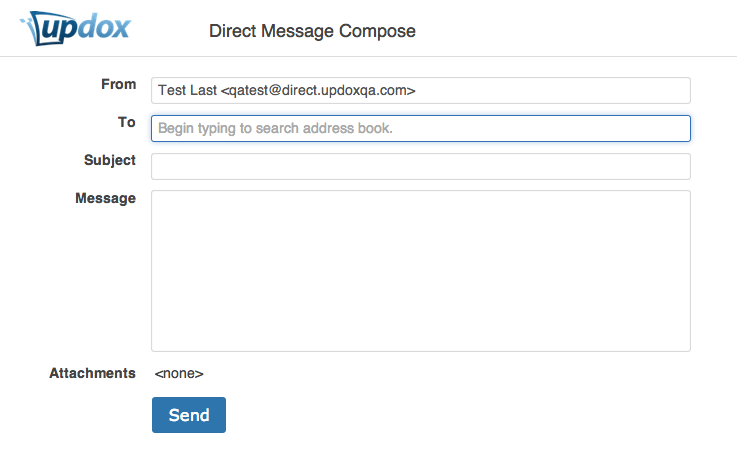Difference between revisions of "API Method MessageCompose"
From Updox API
(→Compose Message) |
(→Build URL) |
||
| Line 19: | Line 19: | ||
== Build URL == | == Build URL == | ||
Use this token to construct a url in the following manner: | Use this token to construct a url in the following manner: | ||
| − | https://{environment}/sso/messageCompose/{vendorId}/{token} | + | <code>https://{environment}/sso/messageCompose/{vendorId}/{token}</code> |
which for this example would look like this: | which for this example would look like this: | ||
| − | https:// | + | <code>https://updoxqa.com/sso/messageCompose/updox/611e840357c9dd58625436996cc2631910188c61</code> |
| − | + | ||
| − | + | ||
== Compose Message == | == Compose Message == | ||
Revision as of 16:49, 8 April 2014
Contents |
Credentials
Provide appropriate credentials for the user who will be sending the message:

Attachments, Prepopulation, Metadata
Provide any relevant additional parameters. If an attachment is to be sent, it must be specified here:

Request and Response JSON
Sending this transaction consists of the following request JSON and response JSON and returns a token:

Build URL
Use this token to construct a url in the following manner:
https://{environment}/sso/messageCompose/{vendorId}/{token}
which for this example would look like this:
https://updoxqa.com/sso/messageCompose/updox/611e840357c9dd58625436996cc2631910188c61
Compose Message
Browsing to this url will show the following one-use-only Direct message compose screen:

When the user hits Send, this window will execute an API call behind the scenes.